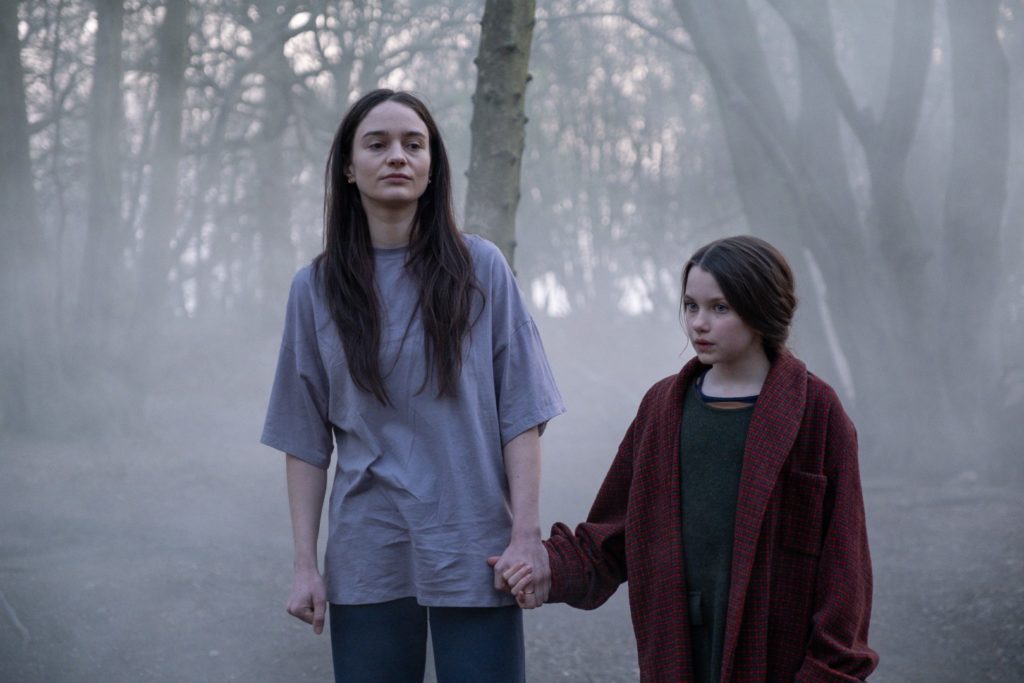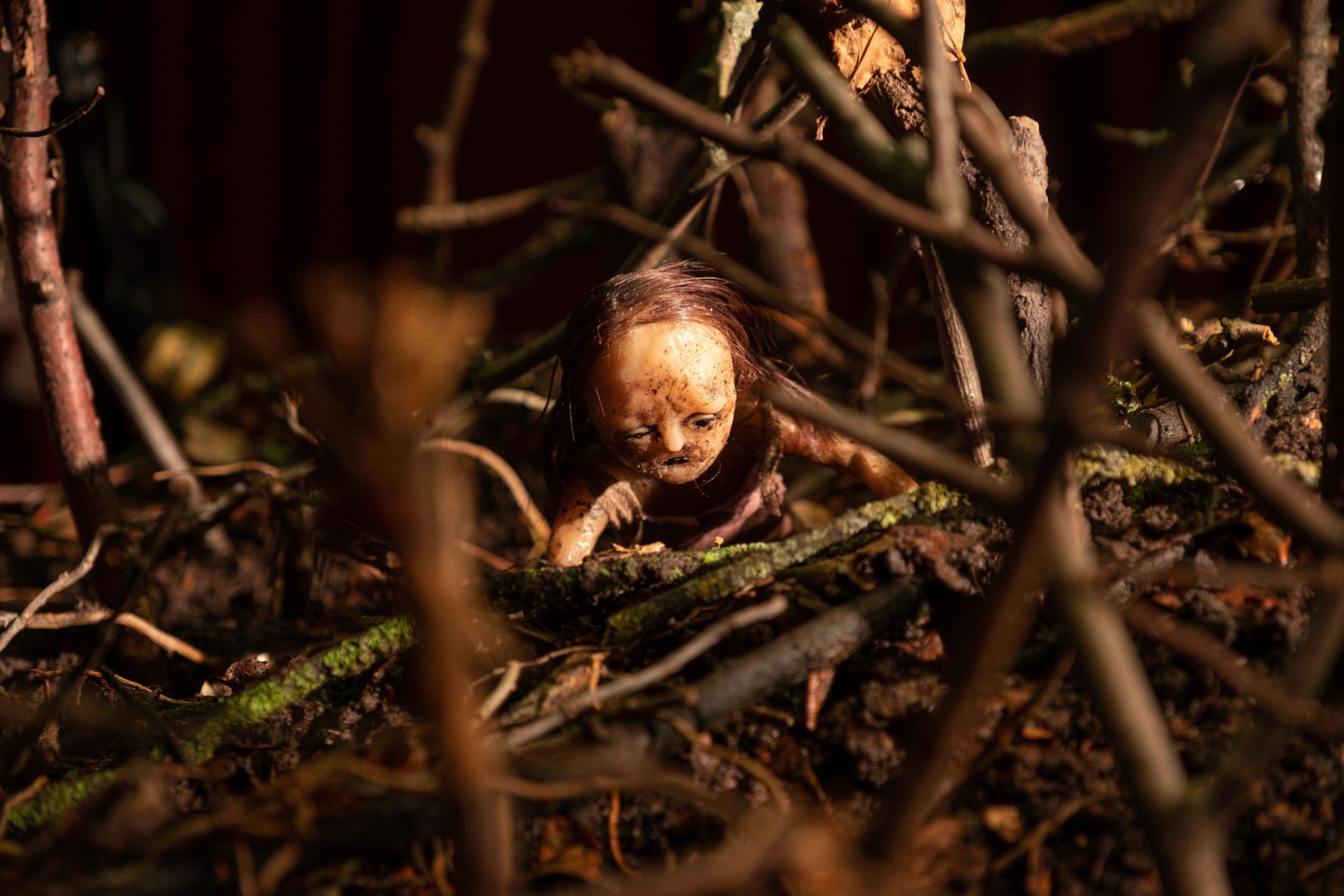
I had a strange sense of deja-vu several times when watching Robert Morgan’s first feature-length film, and the first of these is because I can never remember who anyone is or what they’ve done. So, when I first glimpsed Morgan’s very distinctive stop-motion style during the opening moments of this feature, I realised that I did know his work, and in fact that one of his short films – Bobby Yeah – has been chipping away at my subconscious ever since I saw it over a decade ago. I don’t think anyone can come away from that one without at least a few questions, questions which could (will) stretch over a good decade. However, where Bobby Yeah is madcap and disturbing but overlaid with so much absurdity that it becomes openly funny, Stopmotion is a different beast. Blending its own stop-motion animation with a disturbing, unfolding story of barely-concealed imposter syndrome and unease, Stopmotion is a lot heavier in its nature, with only a few flashes of humour as the proverbial hits the fan in waves. The basic general direction of its plot may feel overly familiar to horror fans – there’s that deja-vu again – but it does more than enough to hold the interest, even as it takes us on this familiar path.
Ella (the incredible Aisling Franciosi of The Nightingale) is a young woman living an isolated life; any freedom has to be taken carefully, in sips. She lives with her mother, a brilliant animator now ravaged by arthritis and unable to do the job; instead, Ella does it for her, working under strict instructions as her mum (Stella Gonet) battles her health problems to get one final film finished. Her arthritis means she needs other care, too: she can’t so much as cut up her own food, though her rather carnivorous diet hardly helps, and hacking away at bloody steaks quickly becomes a staple theme in the film, though the reasons for this vary.
A catalyst for confrontation between mother and daughter comes when Ella mildly announces that she has some ideas for an animation, too; when pressed, she falters, and when she’s faced with her boyfriend’s sister, who is also building a successful career in animation, Ella begins to crack under the pressure. Her mother’s frustrations make her lash out at Ella, but the drama of a confrontation between them helps to cause her mother to have a catastrophic stroke; the story of the cyclops woman who bargains with the gods but sees her own death as a result, has to wait. But it can’t wait long: now left to her own devices, Ella decides she’s going to finish the film for her mother. She takes a flat in a down-at-heel part of town just for this purpose, and starts setting up there. Her work is interrupted by a very impertinent little girl who also lives in the block, and who wants to know everything about what her new neighbour is up to – but, with a child’s characteristic honesty, the little girl (Caoilinn Springall) dismisses the cyclops story as ‘boring’. She has another idea – and it’s horrifying, and yes, we get to see it when Ellie agrees to make it.
Children have that knack of presenting very simple stories as incredibly frightening and, if you’re able to remember back that far, you might be able to recall the odd flash of that straightforward, but soul-curdling strangeness in yourselves; the film does a good job of capturing some of that, because the little girl’s story is simplistic (a little girl being pursued through the woods) but something about it appeals to Ella, and to us by extension – the puppets which they fashion together, introducing horrible elements like ash, meat and carrion, certainly look authentically unpleasant. It’s pretty obvious that the girl is an embodiment of some aspect of Ella, her own Imp of the Perverse who gives voice to things that she, although still a young woman herself, has had beaten out of her by a challenging personal life and a kind of self-doubt which is reinforced by ‘loved ones’ with their own agendas.
Also clear is that the film’s overarching fascination is with the creative process, overlapping to an extent with the idea of the ‘tortured artist’, our cultural expectation that good art has to wring everything out of its maker (which to be fair, isn’t an idea which has come about entirely out of fresh air, and there are lots of examples of it really happening.) Music, painting and filmmaking have been well represented in horror films about this process, from Shadow of the Vampire to Bliss, but stop-motion animation, not so much; it’s certainly a good medium to examine, as the level of patience and focus it demands could send anyone a little scatty, so it’s good to see it so central here.
Where perhaps the film is at its weakest is simply in how the ‘descent into madness’ has been played through so similarly and recently, too, in films like May, Censor and Saint Maud – all films where a fragile female protagonist tries to make or build something to assuage her own demons (Saint Maud in particular, with the dysfunctional relationship between Maud and her employer, came to mind several times, but then so did Censor, and lead character Enid’s own plight as she descends into a mysterious film). So there’s a chance that Stopmotion may lose you through its level of overlap with other, similar projects – though its own brilliant, unsettling meld of animated footage and live footage does great things with its medium of choice, and what could be better at representing insanity than the kinds of horrid critters Morgan comes up with? It was quite pleasing that, as different morgue wax-made concoctions appeared on screen, lots of festival audience members around me let out a synchronised murmur of disapproval. There’s a lot to be said for that; shared moments of disgust at a horror film festival are the ultimate compliment.
Stopmotion is also a beautifully shot, lit and acted film, with brilliant production values and a real sense of purpose throughout- it didn’t feel laggy, even if you knew or could make an educated guess about the outcome. Like Mad God – another stop-motion movie with a very long gestation – the notion of a project like this overwhelming its maker is completely plausible, and borne out by the intricate and unwholesome creations which appear on screen. This is a fine piece of work, and an expertly-composed aesthetic (and aural! Oh god, and aural) nightmare.
Stopmotion (2023) appeared at Celluloid Screams in Sheffield, UK.
